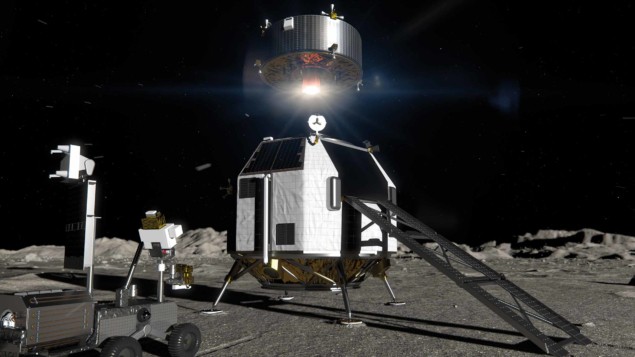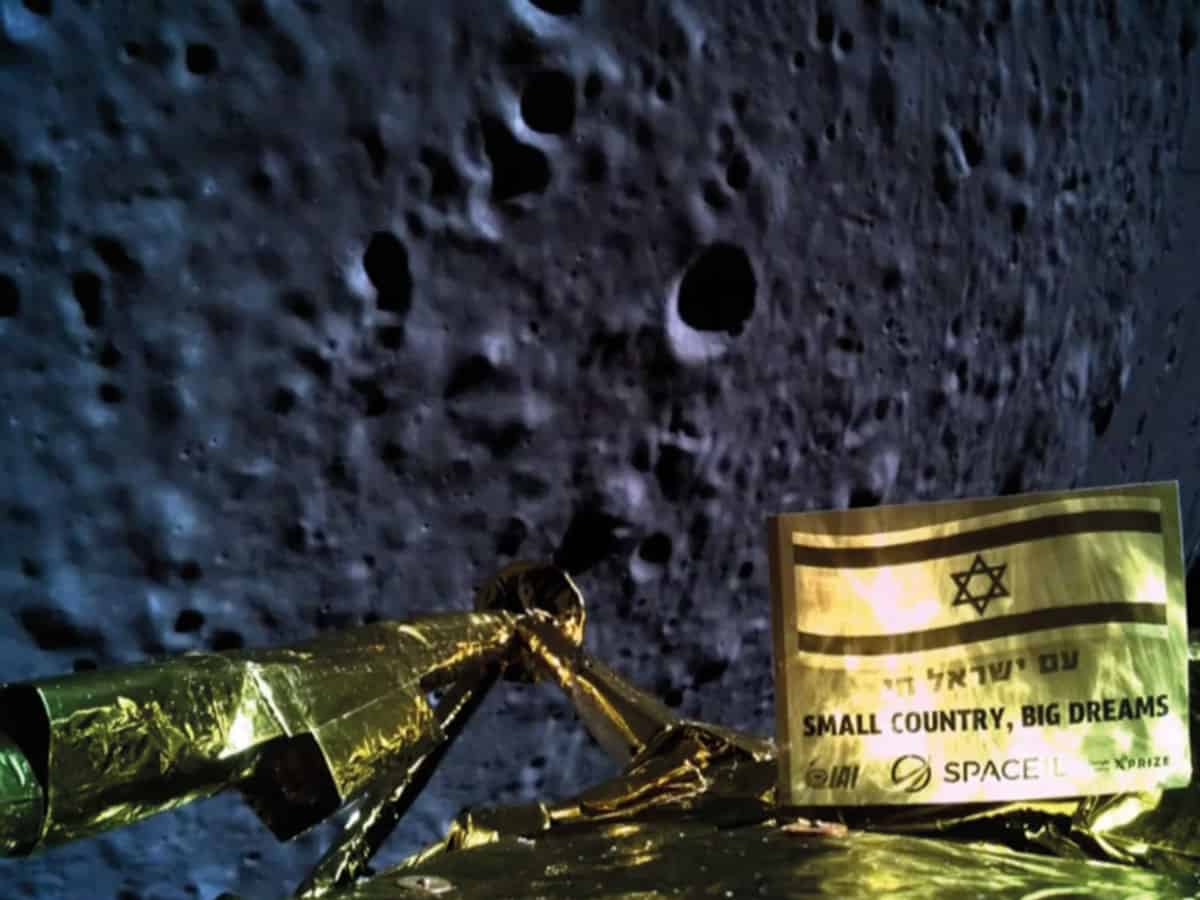A string of upcoming lunar missions will yield many scientific breakthroughs, as James Dacey discovers

It is a truism to say that the race to the Moon was never primarily about science. It was a political battle between superpowers, with ideology and economics at stake. Regardless of the motives, the US Apollo missions and the Soviet Union’s Luna programme did also result in plenty of new science and unprecedented technology breakthroughs. In addition, the era left many tantalizing questions about the Moon, which have grown more intriguing in recent years with data from unmanned missions.
Fast forward to 2019 and the race is back on. This time, there are more nations competing and the rise of commercial space players has diversified the field. But national pride, along with some big personal egos, are very much on the line once again. Fortunately, science and technology could stand to win as a result of this competition, with some of the key developments having been discussed at this year’s recent general assembly of the European Geosciences Union in Vienna.
Could we create a base on the Moon that could accommodate long stays and the possibility of a permanent human presence?
During a session on lunar science and upcoming lunar missions, delegates pondered questions such as how exactly the Moon formed, assuming it aggregated from the debris left by a collision between early Earth and a Mars-sized body. With its lack of atmosphere and plate tectonics, could we find clues to the origin of life on Earth preserved within the lunar geology? And could we even create a base on the Moon that could accommodate long stays and the possibility of a permanent human presence?
Targeting a lunar gateway
Moon missions are coming thick and fast. In March US vice-president Mike Pence declared that the US wants to return astronauts to the lunar surface by 2024 (which would be the final year of Donald Trump’s presidency, should he win a second term). The landing would be part of NASA’s Artemis programme, named after Apollo’s twin sister in Greek mythology. The concept is for lunar landers to depart from the planned Lunar Gateway – a small lunar-orbiting space station being developed by NASA and its partners.
Pence’s announcement came less than three months after China made history by landing the Chang’e-4 spacecraft on the far side of the Moon on 3 January. In relaying images and data back to Earth, Chang’e-4 became the first mission to operate on the far side of the Moon – the hemisphere that always faces away from Earth. Studying this rugged and varied landscape could provide important information about how the Moon and the rest of the solar system formed (see ‘Exploring the far side’).
China’s success means that it is joined by Japan, India and the European Space Agency (ESA) in having successfully sent craft that have orbited, landed on or flown by the Moon. But private organizations have also entered the game, notably the European contractor LuxSpace, which in 2014 became the first private probe to fly by the Moon, piggy-backing on a Chinese mission. This April, meanwhile, the Israeli not-for-profit organization SpaceIL attempted to become the first private outfit to land a craft on the Moon, although its engine dramatically failed during the final moments of landing.

Private players
SpaceIL had originally been among several private players seeking to win the Google Lunar XPRIZE – to build, launch and land an unmanned spacecraft on the Moon. Although Google’s competition ended on 31 March 2018 with no winners, SpaceIL pushed on with its mission with private investment. Chris Russell, a member of the SpaceIL science team, told Physics World that the gamechanger for lunar travel is the arrival of private companies that can assist with launching rockets and planning missions. Indeed, SpaceIL’s Beresheet spacecraft (meaning “Genesis” in Hebrew) hitched a ride to space on one of SpaceX’s Falcon 9 rockets. “In the end, SpaceIL fell victim to the fact it’s very hard to go and land on the Moon,” Russell told EGU delegates the morning after the crash.
Another speaker in Vienna was Igor Mitrofanov of Russia’s Institute for Space Research in Moscow, who discussed Russia’s revived Luna programme. Scheduled for 2021, Luna-25 will be Russia’s first mission to the Moon since Luna-24 in 1976 and it will be swiftly followed by the Luna-26 orbiter in 2023, then the Luna-27 lander in 2024. These three missions will investigate the chemistry of the lunar permafrost in the Moon’s cold southern polar region. Although the origin of life is still a highly contested question, some believe that it could have been seeded by complex molecules contained in asteroids that bombarded the Earth. The mechanism through which life then emerged is not clear, but any “pre-organic” molecules preserved in the lunar ice may provide clues. The absence of an atmosphere and plate tectonics means the Moon can provide a frozen record of the Earth’s advanced history.
In addition to the science goals, Russia’s upcoming missions will also test a new “soft-lander” technology, which Mitrofanov compared to a reverse-parking system you find in cars. If successful, this technology could assist future astronauts to guide themselves to a safe landing, clear of hazards including rocks and steep slopes. Indeed, the Luna programme will pave the way for a lunar base that can be visited by a future series of manned missions.
The last of the space cowboys
Matthias Maurer, who in 2018 became an ESA-certified astronaut allowed to travel into space, believes that Moon exploration should prioritize the creation of permanent bases akin to Antarctic research stations. Giving the keynote talk at the EGU session, Maurer explained how the “lunar village” will enable longer stays and more detailed scientific investigations. Maurer – a materials scientist by training – also spoke about the qualities required in the modern astronaut. Apollo-era astronauts needed “fast reactions like cowboys”, while the astronauts returning to the Moon will have to have a much deeper understanding of science and technology, especially the geology, he said.
Maurer discussed some of the research into lunar bases taking place at the new Luna facility at ESA’s Astronaut Centre in Cologne, Germany. By recreating the lunar surface on Earth, the centre is investigating how astronauts can live and work for longer periods in reduced gravity. It is seeking to develop sustainable sources of oxygen and energy, along with improved communications between astronauts and research scientists on Earth. Maurer was particularly animated when speaking about the flexible skin suits that could make physical tasks “10 times” faster than possible with current rigid pressurized space suits.
As a stepping stone to a permanent lunar base, ESA is also working with the Japanese and Canadian space agencies on HERACLES, a robotic mission planned for the mid-to-late-2020s. The aim is to land an 1800 kg rover on the lunar surface, controlled by astronauts located in the orbiting Lunar Gateway. An ascent module will take off from the surface and return to the gateway with samples taken by the rover.
Discussing the HERACLES project at the EGU meeting was planetary scientist Harald Hiesinger of the University of Münster, Germany. “To make it clear, HERACLES is not the perfect science mission. But it is a pretty good compromise between science and technology,” he said. “We were thinking of placing the Lunar Gateway in a near rectilinear halo orbit, which we can optimize for lunar surface missions. With this type of orbit, we can cover or reach the entire lunar surface.”



